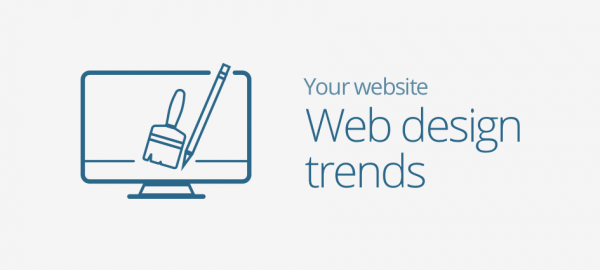Your website design will determine whether a visitor spends time on your website or hits the back button once they land on your site. Clearly, getting them to your site depends upon your search engine ranking, backed up by some element of marketing…
Website design and layout
Your website must be compatible with all types of devices, including mobile phones, tablets and PCs. Whether your site is based upon a content management system (such as WordPress), an e-commerce store selling lots of items, or for a services company, special attention must be paid to the colours used and the sizes and types of fonts. The overall effect of these should result in easy-to-read and eye-catching pages. Of course, it is the content of the landing pages that will be decisive in keeping the viewer interested, or not.
Website content – links and contact information
The positioning and naming of the links to the other pages and the contact information should be positioned and designed to make it easy for the viewer to navigate around the website. Web pages, ideally, should not just be text, there should be some graphics or pictures to break up the pages. Links to other sites should be embedded in the text and be easily identified by the colour, which is normally light blue and underlined.
Contact information (email addresses, phone numbers, etc.) should be present on every page and at the same place on the page, plus if required, a contact form that the visitor can fill in to make enquiries. The contact form information should be linked to an email address and once received, the information from the form should be acted upon with minimal delay.
The number of pages should not be excessive, unless the site is an e-commerce store with a catalogue of items, and the content of each page should be unique with an easily understood page title. As a guide, each page should not contain more than 1,000 words with a minimum of at least 200 words.
Additional website factors and content
The designer of the website must consider other factors, such as SSL certification, a press page, client testimonials (including videos), social media links, logo design, and Trustpilot accreditation. Although not all of these are necessary for some types of website, all of them are generally required for company websites.
SSL certification is used when personal and private information (such as bank details when paying for an item or service, or other security information) is entered on a form on the website. You will know if a site has SSL certification if a padlock appears in the browser bar indicating that the page is protected by a cryptographic key and the data being sent is secure. SSL is now a major factor in Google ranking and should apply site-wide.
The inclusion of a press page, showing press releases and press articles, gives the viewer some confidence that the site and the owner of the site is legitimate. Another confidence booster is that of client testimonials, which can include videos taken by the client. Of course, client testimonials can be fictitious, but if the clients are independently verified via Trustpilot, Feefo or similar organisations, this will provide the visitor with a greater level of confidence.
Social media links, such as those to LinkedIn, Facebook, Instagram, Twitter and YouTube (as appropriate) should be included on the webpages.
Not all businesses have their own logo, but the inclusion of one does add to the legitimacy of the site, especially if it is a well designed and easy recognisable logo. Logo designs can be obtained for free using online design sites or can be produced professionally at reasonable costs. Logos lend sites an air of credibility.
Website upkeep
Once the website is created and live on the Internet, it requires ongoing maintenance. If you have included links to other websites and social media links, these must be checked to ensure that they still work. Updates may be required to press releases or articles in view of the latest information received. Client testimonials should be updated with later ones. It may be necessary to add additional information, or pages, to the website due to changes in the market, technology products or services on offer or for some other reason. Another important activity to cover at least every month is to check the SEO ranking of the site for important search terms and to make the requisite changes so that the ranking improves rather than declines.
Using the information above it should be relatively easy to design your own successful website yourself using our DIY Website Builder and our professional templates.
